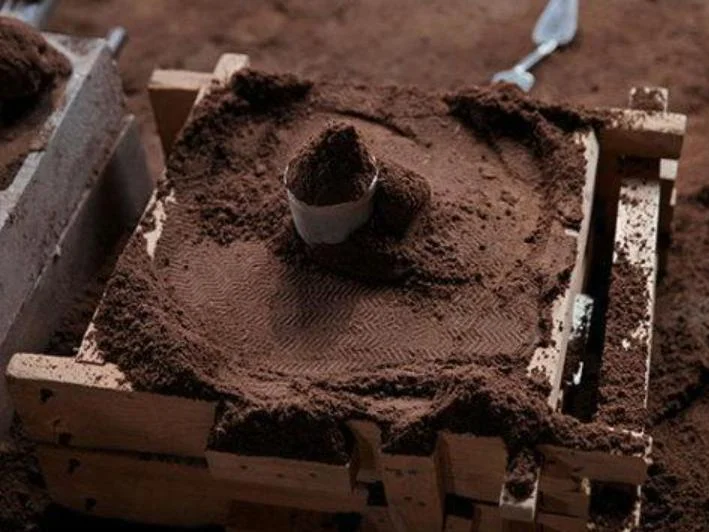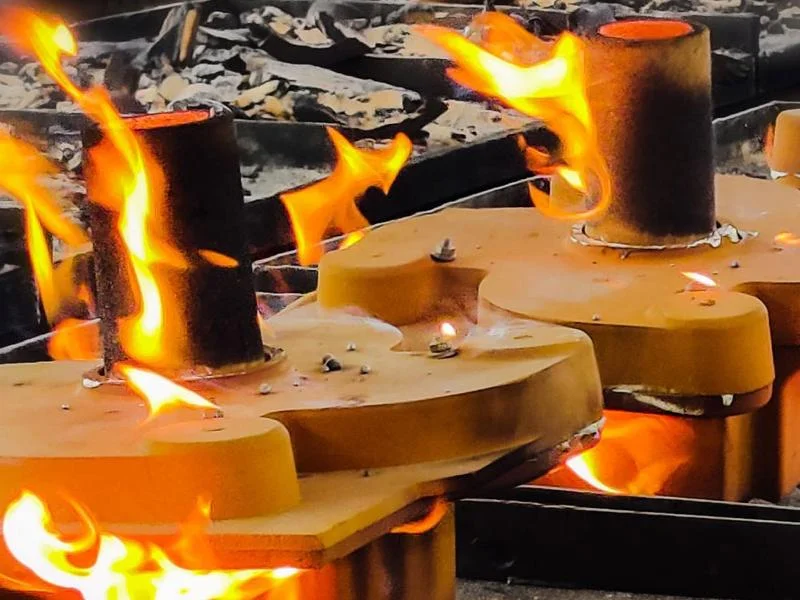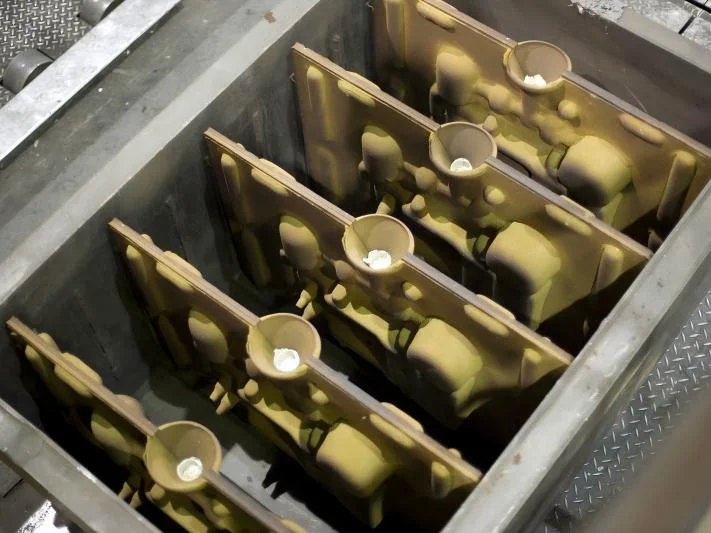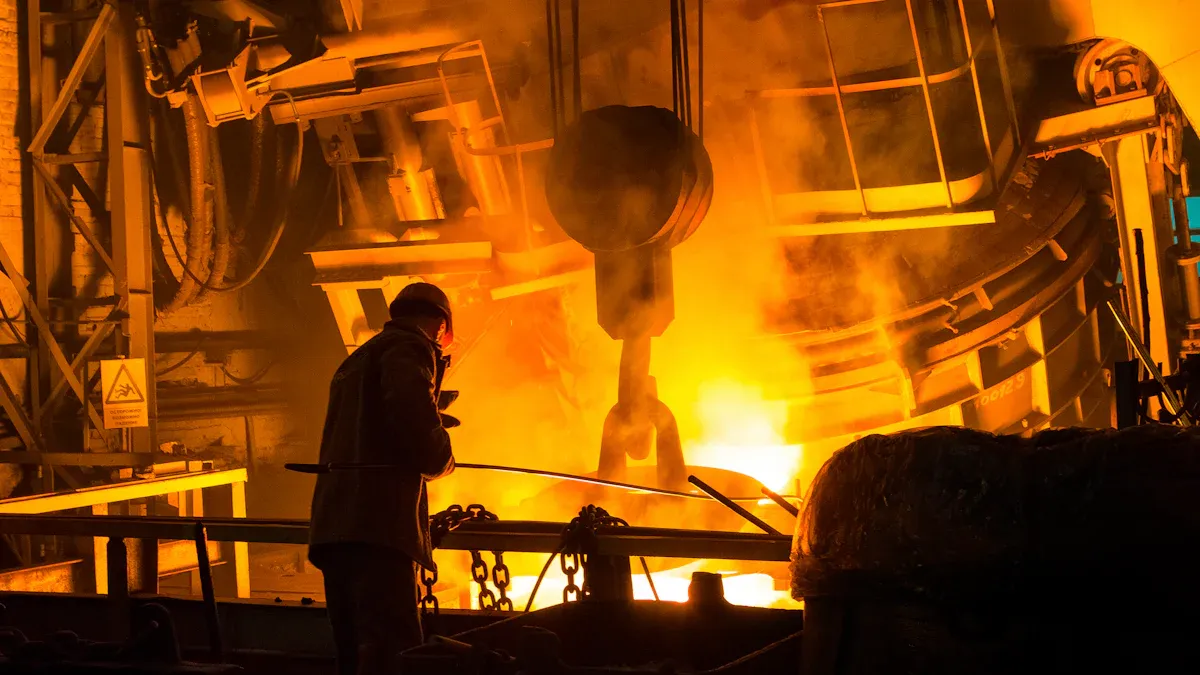
Is Shell Mold Sand Casting better than traditional sand casting? The answer depends on your specific project requirements. While sand casting holds the largest market share and is ideal for custom and small batch jobs, many industries prefer Shell Mold Sand Casting for its superior accuracy and smoother surface finish. As a leading Shell Casting & Sand Casting Manufacturer, ManufaKEMING Machinery stands out as a one-stop castings solution manufacturer. Utilizing advanced technology, Manufacturer KEMING Machinery delivers reliable and high-quality results across a wide range of industries.
Key Takeaways
Shell Mold Sand Casting gives better accuracy. It also makes smoother surfaces than regular sand casting. This helps when you need parts that fit very well.
Pick Shell Mold Sand Casting for small and detailed parts. It works well with thin walls and tricky shapes. This is good for car and medical companies.
Sand Casting works best for big and simple parts. It saves money for heavy pieces. Many builders and miners use this method.
Think about the cost to start making parts. Shell Mold Sand Casting usually costs less at first. This helps if you need lots of detailed parts.
How fast you make parts is important. Shell Mold Sand Casting can make parts fast. This helps companies finish work on time and stay ahead.
Process Overview

Knowing how casting works helps people pick the best method. Both shell mold sand casting and sand casting use molds for shaping metal. The steps and materials are not the same.
Shell Mold Sand Casting Steps
Shell Mold Sand Casting uses sand with resin to make strong molds. The process starts with a metal pattern, often cast iron. Workers heat the pattern and cover it with fine sand and resin. This makes a hard shell shaped like the part. They take off the shell and glue two halves together. The shells go in a steel box with fine sand for support. Molten metal is poured into the shell. When it cools, workers break the shell and clean the casting.
Keming Machinery uses advanced machines for these steps. Their process makes molds fast, about ten minutes for each shell. This lets them make many parts quickly. The resin-coated sand gives each part a smooth surface and tight fit. Shell Mold Sand Casting is great for industries that need accurate parts.
Sand Casting Steps
Sand casting uses regular sand and a pattern, often aluminum or wood. Workers put the pattern in a steel box and pack sand around it. They take out the pattern, leaving a space in the sand. If the part needs hollow spots, they add a core before pouring metal. After the metal cools, they break the sand mold and clean the casting.
Sand casting takes longer to make each mold, usually twenty to thirty minutes. The surface is rougher, and the fit is not as tight. This method is good for big, simple parts and small batches.
Here’s a quick look at the main steps for each process:
Step | Shell Mold Sand Casting | Sand Casting |
|---|---|---|
Tooling production | Cast iron tool, machined to precise dimensions | Tool often from aluminum or wood |
Mould creation | Heated tool filled with resin-coated sand | Tool placed in a steel box and filled with sand |
Cavity formation | Hardened shell removed from the tool | Tool removed, leaving a cavity in the sand |
Assembly | Two shell halves glued together | Two boxes assembled |
Support and casting | Assembled shells placed in a steel box with fine sand | Core placed if needed before pouring metal |
Finishing | Shell removed after cooling, casting cleaned and finished | Sand mold removed after cooling, casting cleaned |
Keming Machinery’s Shell Mold Sand Casting is known for fast mold making, smooth surfaces, and high accuracy. Their process is good for making many parts, so it works well for industries that need lots of precise pieces.
Mold Properties and Surface Finish

Strength and Accuracy
Shell Mold Sand Casting is known for its strength and accuracy. It uses fine sand mixed with resin. This makes a hard shell that keeps its shape well. The molds can show small details and sharp corners. Parts made this way fit together better. They also need less fixing after casting.
Let’s look at some numbers. Shell Mold Sand Casting can have a linear tolerance as close as ±0.25–0.5 mm. Regular sand casting has a wider tolerance, from ±0.8 to 3.0 mm. The size of the part can change this range. Shell molding makes parts that match the design more closely.
Here’s a table that compares the two methods:
Metric | Shell Molding Casting | Sand Casting (Green Sand) | Sand Casting (Resin Sand / No-bake) |
|---|---|---|---|
Surface Roughness (Ra) | 1.6–6.3 µm | 6.3–25 µm | 6.3–12.5 µm |
Dimensional Tolerance (ISO 8062-3) | CT7–CT9 | CT10–CT13 (no-bake: CT9–CT11) | CT9–CT11 |
Linear Tolerance (small dims) | ±0.25–0.5 mm | ±0.8–3.0 mm (size-dependent) | ±0.3–0.6 mm |
Keming Machinery’s products show this high accuracy in every part. Their team uses new techniques to make sure each casting meets strict rules. Customers who need parts with tight tolerances often pick this method because it is reliable.
Surface Quality Comparison
Surface finish is important for parts that move or fit together. Shell Mold Sand Casting uses resin-coated sand. This gives a smoother surface than regular sand casting. It means less time spent on grinding or polishing after casting.
Here’s a quick look at surface roughness values:
Casting Process | Surface Roughness (Ra) |
|---|---|
Shell Mold Casting | 75-150 microinches |
Sand Casting | 250-500 microinches |
A smoother surface looks better and helps parts last longer. It lowers friction and wear, which is good for moving parts in machines. Keming Machinery’s Shell Mold Sand Casting gives castings a clean, even finish. Many customers see that their parts need less finishing work. This saves both time and money.
Tip: Picking a process with a better surface finish can lower your total production costs. You spend less on extra work and get parts ready to use faster.
Material Compatibility
Metals for Shell Mold Sand Casting
Shell mold sand casting works well with many metals. Keming Machinery uses this process to cast iron, carbon steel, alloy steel, and stainless steel. The resin-coated sand in shell molding creates a strong mold. This mold can handle high temperatures and gives each part a smooth finish.
Here are some metals that shell mold sand casting supports:
Carbon steel: Good for strength and easy to machine.
Alloy steel: Offers better mechanical properties for tough jobs.
Stainless steel: Great for parts that need to resist rust and wear.
Cast iron: Used for parts that need to be strong and last a long time.
Aluminum alloys: Chosen for lightweight parts with good castability.
Shell molding uses finer sand than green sand casting. This helps the mold show small details and sharp edges. The process also needs less draft, usually just one degree. That means designers can create more complex shapes. Keming Machinery’s shell mold sand casting is a top choice for industries that need high precision and smooth surfaces.
Metals for Sand Casting
Sand casting is one of the oldest ways to make metal parts. People have used it for thousands of years. This method works with almost any metal alloy. Both ferrous and non-ferrous metals can be cast using sand molds.
Some common metals for sand casting include:
Gray iron and ductile iron
Steel alloys
Aluminum and copper alloys
Bronze and brass
Sand casting can handle large and heavy parts. The process is flexible and supports many shapes and sizes. Most of the sand used in molding can be recycled, which helps reduce waste. Iron foundries often suggest sand casting for big or simple parts. They look at the weight, size, and structure of the part before choosing the best casting method.
Tip: If you need a part made from a rare or special metal, sand casting is likely to support it. For smaller, more detailed parts, shell mold sand casting may be the better fit.
Part Size and Complexity
Small and Intricate Parts
Shell mold sand casting shines when it comes to small and detailed parts. The process uses fine resin-coated sand, which helps create thin walls and sharp corners. Many engineers choose this method for parts that need high precision. Shell molding can handle wall thicknesses as thin as 2–3 mm. It also supports complex shapes, including undercuts and fine details.
Here’s a quick look at how each method handles complexity:
Casting Method | Capabilities |
|---|---|
Shell Molding | Supports thin walls (2–3 mm), intricate details, and undercuts |
Sand Casting | Struggles with thin walls and complex internal features |
Keming Machinery often produces small gears, brackets, and housings using shell mold sand casting. These parts need tight tolerances and smooth surfaces. The process makes it easier to get the exact shape without extra machining. Customers in the automotive and medical industries often request these types of parts.
Tip: If a project calls for a part with lots of detail or thin sections, shell mold sand casting is usually the better choice.
Large and Simple Parts
Sand casting works best for large and less complicated parts. The method uses regular sand, which can fill big molds and support heavy weights. Sand casting can make parts that weigh several tonnes. Shell mold sand casting, on the other hand, usually tops out at around 30 kg.
Here’s a table that shows the size range for each method:
Casting Method | Minimum Part Size | Maximum Part Size |
|---|---|---|
Sand Casting | A few grams | Many tonnes |
Shell Mould Casting | N/A | Up to 30 kg |
Factories often use sand casting for engine blocks, pump housings, and large machine frames. These parts do not need as much detail or a smooth finish. Sand casting also costs less for big parts. Keming Machinery recommends sand casting when customers need large, simple shapes.
Note: For very large or heavy parts, sand casting is the go-to method. It offers flexibility and supports a wide range of sizes.
Cost and Production Speed
Tooling and Setup Costs
When starting a casting project, people first notice the cost. Making tools and setting up can be expensive. Tooling costs are important for the total budget. Shell mold sand casting needs a metal pattern. This pattern is smaller and easier to use. Sand casting uses bigger patterns and more materials. This can make it cost more.
Here’s a table that shows the average tooling costs for each method:
Casting Type | Tooling Costs |
|---|---|
Shell Mold Casting | $2,000 – $5,000 |
Sand Casting | $6,000 – $20,000 |
Shell mold sand casting keeps setup costs lower. This is helpful for projects needing many detailed parts. Keming Machinery uses advanced machines to make patterns fast. This helps customers spend less money at the start. It also lets them begin their projects sooner.
Tip: Lower tooling costs help businesses save money. This is good when making lots of small or complex parts.
Cycle Time and Productivity
Production speed is important when time is short. Shell mold sand casting is known for being fast. Workers can make each shell in about ten minutes. This means factories can make more parts quickly.
Let’s see how both methods compare:
Shell mold casting makes 5 to 50 parts per hour. The number depends on mold size and how hard the part is to make.
Sand casting is slower. It works best for low or medium amounts. It makes about 10 to 15,000 pieces each year.
Sand casting takes longer for each part. It usually takes twenty to thirty minutes for one mold.
Factories using shell mold sand casting can fill orders fast. This is true even for tricky parts. Keming Machinery’s process helps customers meet tight deadlines. The resin-coated sand molds keep production moving without stops.
Here’s a table that compares other important aspects:
Aspect | Shell Moulding | Sand Casting |
|---|---|---|
Environmental Impact | More environmentally friendly due to less pollution | Less environmentally friendly due to more material use |
Complexity | Less flexible for complex designs | More flexible, allows for complex designs |
Precision | Offers tighter tolerances and smoother surfaces | Generally less precise than shell moulding |
Material Suitability | Not ideal for high melting point materials | Better suited for high melting point materials like steel |
Production Speed | Faster, about 10 minutes per shell | Slower, taking 20-30 minutes per part |
Shell Mold Sand Casting helps manufacturers make more parts and save money. Keming Machinery’s team works hard to deliver castings on time. This is true even for detailed projects. Customers who need fast and high-quality parts often pick this method.
Note: Faster cycle times mean more parts made quickly. This helps companies stay ahead in busy markets.
Quality and Defect Rates
Making good castings is very important in factories. People want parts that look nice and work right. If there are defects, it can cause trouble. Defects might slow down work or make parts useless. Shell mold sand casting and sand casting both have their own problems. Let’s see what usually happens with each one.
Common Defects in Shell Mold Sand Casting
Shell mold sand casting uses resin-coated sand for strong molds. This helps stop many problems, but some still happen. Here is a table with the most common issues and what they mean:
Defect Type | Description |
|---|---|
Drops | Bumps from sand falling into the hot metal. |
Metal Penetration | Hot metal gets into sand gaps, making the surface rough. |
Rat Tails, Buckles, and Veins | Lines or cracks on the bottom of the casting. |
Shift or Mismatch | The two mold halves do not line up right. |
Flash, Fin, and Burrs | Thin extra metal at the edges or where the molds meet. |
Other problems can show up, too:
Blowholes and pinholes: Small holes on or under the part’s surface.
Sand burning: Extra metal at corners from bad sand.
Sand and slag inclusions: Sand or slag stuck inside the part.
Sand holes: Empty spots from sand falling into the metal.
Cold laps: Cracks with round edges from low heat or bad pouring.
Keming Machinery’s shell mold process helps stop most of these problems. Their team checks every part to make sure it is good. This way, customers get parts they can trust.
Common Defects in Sand Casting
Sand casting uses regular sand, which can cause more problems. The sand is rougher, so defects happen more often. Here is a table that compares defect rates:
Casting Process | Common Defects | Defect Rate Comparison |
|---|---|---|
Sand Casting | Porosity, rough surfaces, thermal cracks | More defects because the sand is rougher |
Shell Mold Sand Casting | Less porosity, sand inclusions, cold shuts | Fewer defects because of the resin shell |
Some usual sand casting problems are:
Porosity: Small holes inside the part from trapped gas.
Rough surfaces: Bumpy texture that needs more work to fix.
Thermal cracks: Cracks from uneven cooling or stress.
Shell mold sand casting usually has fewer problems. The resin shell makes a tighter mold, so parts are smoother and more exact. Keming Machinery’s process is known for low defect rates and good quality.
Tip: Picking the best casting method can help lower defects and save time on fixing parts.
Applications and Industry Use
Shell Mold Sand Casting in Industry
Many industries use Shell Mold Sand Casting for accurate and smooth parts. Keming Machinery helps companies in cars, planes, medicine, and energy. These fields need parts that fit well and last long.
Here is how different industries use this method:
Industry | Application Description |
|---|---|
Aerospace | Used for important parts like turbine blades and cases, valued for strength and accuracy. |
Medical | Makes small and medium parts needing high accuracy, like surgical tools. |
Automotive | Makes engine and transmission parts, known for tight fits. |
Energy | Needed for strong parts in wind turbines and power plants, focusing on accuracy. |
Car engineers pick Shell Mold Sand Casting for camshafts, crankshafts, gearboxes, rocker arms, and connecting rods. Plane makers use it for turbine blades, brackets, and housings that must be light and strong. Medical companies use it for tools and housings that need to be exact and easy to clean. Energy companies use it for wind turbine and power plant parts.
Here is another table showing how this process helps each field:
Industry | Application | Benefits Achieved | Key Techniques Used |
|---|---|---|---|
Automotive | Engine Components | Lower cost, better finish | Precision Shell Molding |
Aerospace | Structural Components | Stronger, lighter parts | High-Temperature Molds |
Medical Devices | Surgical Instruments | More accurate parts | Tight Tolerances |
Construction | Machinery Parts | Stronger, faster to make | Automated Molding |
Tip: If you need parts that fit tightly and look smooth, Shell Mold Sand Casting is a great choice.
Sand Casting Applications
Sand casting is good for big, simple, and heavy parts. Factories use it for engine blocks, pump housings, and large frames. This method is good for making tricky shapes at a lower price, especially when the material does not need to bend.
Here are some ways sand casting is used:
Making tricky shapes for heavy machines
Saving money on large parts
Using materials that do not bend well
Sand casting can make very heavy parts, even several tonnes. It is the main choice for building, mining, and shipbuilding. These jobs need strong parts that do not have to look perfect.
Note: Sand casting works best for big, simple parts and when saving money is more important than a smooth finish.
Picking the best casting method depends on what your project needs. Shell Mold Sand Casting is good for parts that need to be exact. It also works well when you want to make parts quickly. The surfaces of these parts are smooth. Sand casting is better for big, simple parts. It is also good if you want to spend less money. Keming Machinery is known for making high-quality parts. They use new ideas in shell mold sand casting.
Important things to think about:
How big and detailed the part is
What kind of surface you want
If the material will work with the process
How many parts you need
How much money you can spend
Feature | Shell Mold Sand Casting | Sand Casting |
|---|---|---|
Precision | High | Moderate |
Surface Finish | Smooth | Coarse |
Part Size | Small to medium | Small to large |
Cost | Moderate | Lower |
If you need help, Keming Machinery gives advice. They help customers pick the right casting method for their projects.
FAQ
What makes shell mold sand casting different from regular sand casting?
Shell mold sand casting uses sand with resin. This makes the molds strong and smooth. Regular sand casting only uses plain sand. Shell molding gives parts more detail and a smoother finish. Many companies use shell molding for parts that must fit very well.
Can shell mold sand casting handle large parts?
Shell mold sand casting is best for small or medium parts. It usually works for parts up to 30 kg. Sand casting is better for bigger or heavier parts. Factories use sand casting for engine blocks and big machine frames.
Which industries use shell mold sand casting the most?
Car, airplane, medical, and energy companies use shell mold sand casting a lot. They need parts that are very accurate and have smooth surfaces. Keming Machinery gives these companies strong and high-quality castings.
Is shell mold sand casting more expensive than sand casting?
Casting Type | Typical Cost per Part |
|---|---|
Shell Mold Casting | Moderate |
Sand Casting | Lower |
Shell mold sand casting costs a little more. But it saves money on finishing work and gives better quality. Many people think the extra cost is worth it.




